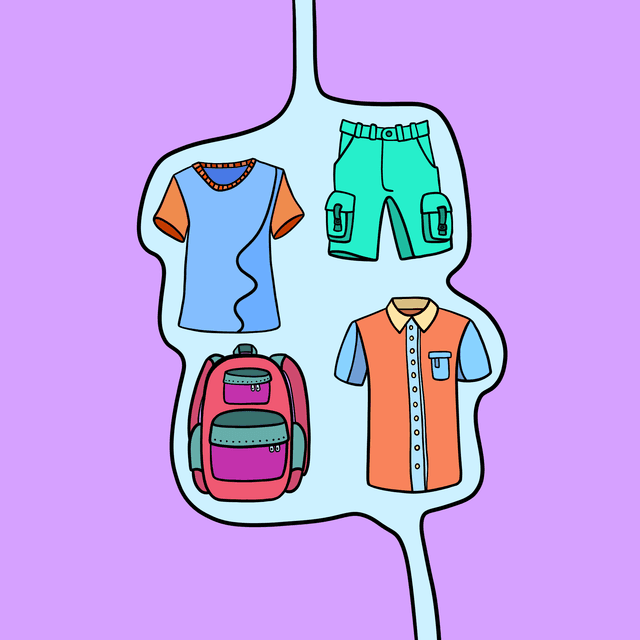Sections
Latest
Expand your wardrobe vocabulary in German, and learn how to describe what you are wearing.





Learning German words related to clothes and fashion can be really useful for expanding one's vocabulary. It can also of course be helpful for communicating with native speakers about these topics - if you have an interest in fashion.
In German, like many other languages, nouns are either masculine, feminine, or neuter. This grammatical gender is not related to the biological gender of the animal, but it does affect the forms of the article and some of the endings of adjectives (for example).
But even if you aren't a fashionista and aren't particularly interested in having a conversation about Tom Ford's latest autumn collection: As a proud & respectable German learner, don't you want to own your very own pair of Lederhosen?
Maybe not. Well, in any case: Knowing some clothes vocabulary in German is pretty useful. Just believe us.
Let's start with the most basic words for German clothes: stuff like shirts, skirts, trousers & jackets.
Of course, we've included die Lederhoseleather trousers in this list: What could be more basic than a solid pair of Bavarian Lederhosen?
One thing to notice is that the German word for trousers is used in the singular: it's "die Hose". You wouldn't normally say "a pair of trousers" in German.
The German word for underwear is easy to remember, as it's more or less a direct translation from the English: "die Unterwäsche."
This includes items such as bras for women, which are called "BHs" or "Büstenhalter," and briefs or boxers for men, which are called "Unterhose" or "Boxershorts."
One more thing to note is that lingerie (or more revealing underwear) is usually referred to as "Dessous" in German.
In German, "Schuhe" refers to shoes in general. There are many different types of shoes and footwear, and each has its own specific name in German.
For example, "Sneakers" are called "Turnschuhe," "Flip-flops" are called "Badeschuhe," "High heels" are called "High Heels," and "Boots" are called "Stiefel."
Other types of shoes include "Ballerinas," which are ballet flats, "Mokassins," which are loafers, and "Halbschuhe," which are low-cut shoes or loafers.
Sandals, slippers & flip-flops are exactly the same in German.
It's worth noting that some of these terms, such as "Sneakers" and "Flip-flops," are loanwords from English and have the same meanings in German.
When it comes to staying warm in winter, Germans have a wide range of clothing options to choose from. For outerwear, a popular choice is a "Mantel," which is a coat that falls to the knee or below.
Another option is a Jackejacket - which is the German word for jacket. On exceptionally cold days or a night out at the christmas market, you might be thankful to be wearing a "Daunenjacke" or a "Steppjacke" (puffer jackets filled with down or a synthetic material).
Other useful words to know when it comes to German winter clothes vocabulary are "der Schal" (scarf), "die Mütze" (hat) and "die Handschuhe (pl.)" (gloves) To keep your feet warm, you might want to be wearing "Stiefel" (boots).
There are many different types of fabrics used in the world of fashion, and each has its own unique properties and characteristics. In German, some common fabric types include
Baumwollecotton,Wollewool, Seidesilk,Leinenlinen & Polyester synthetic fiber.
Other fabrics that are commonly used in Germany include Jeansdenim,
Samtvelvet &Lederleather.
Fabric patterns, such as stripes, polka dots, and plaid, can also be described in German using words like "Streifen," "Karo," and "Glencheck-Muster":